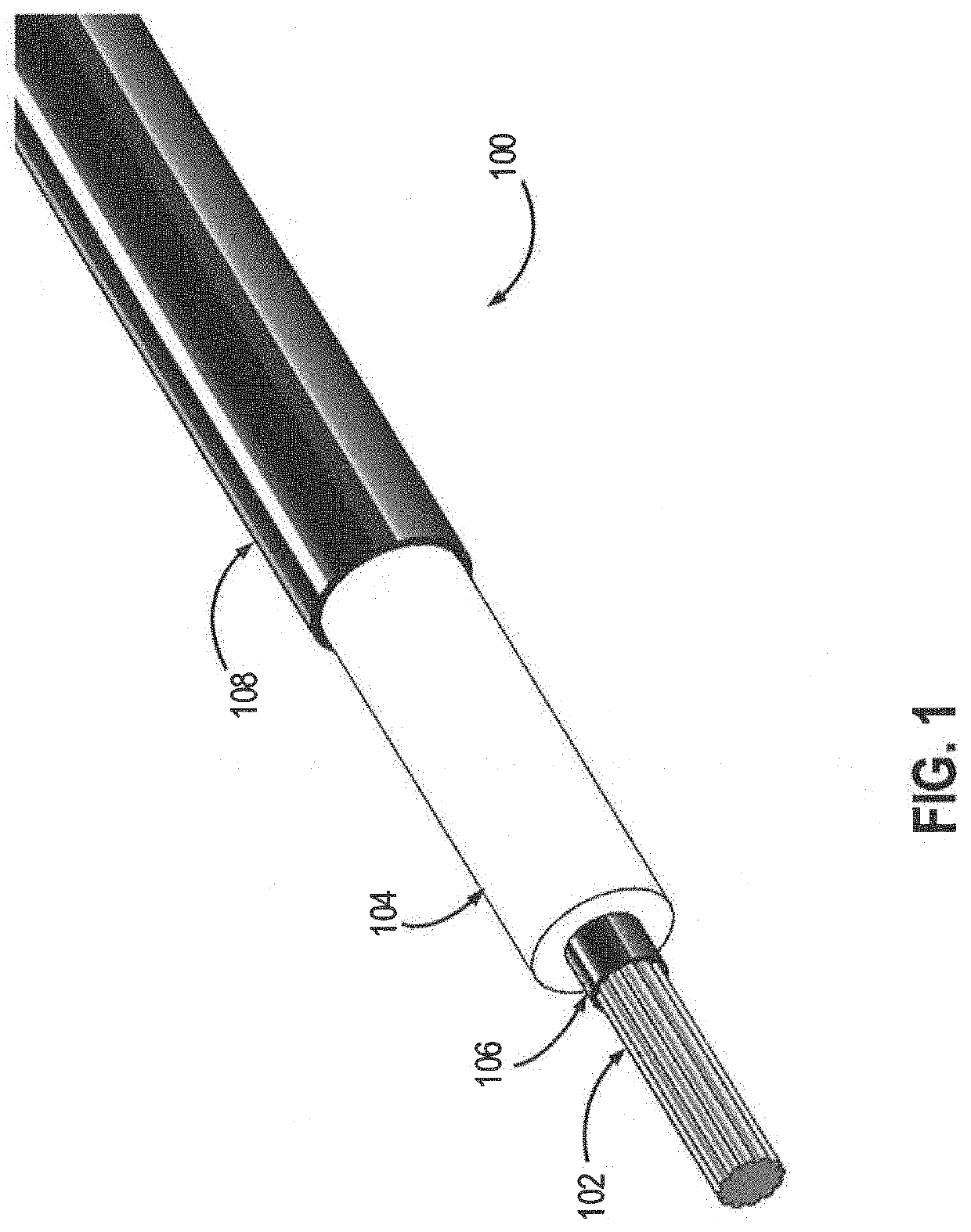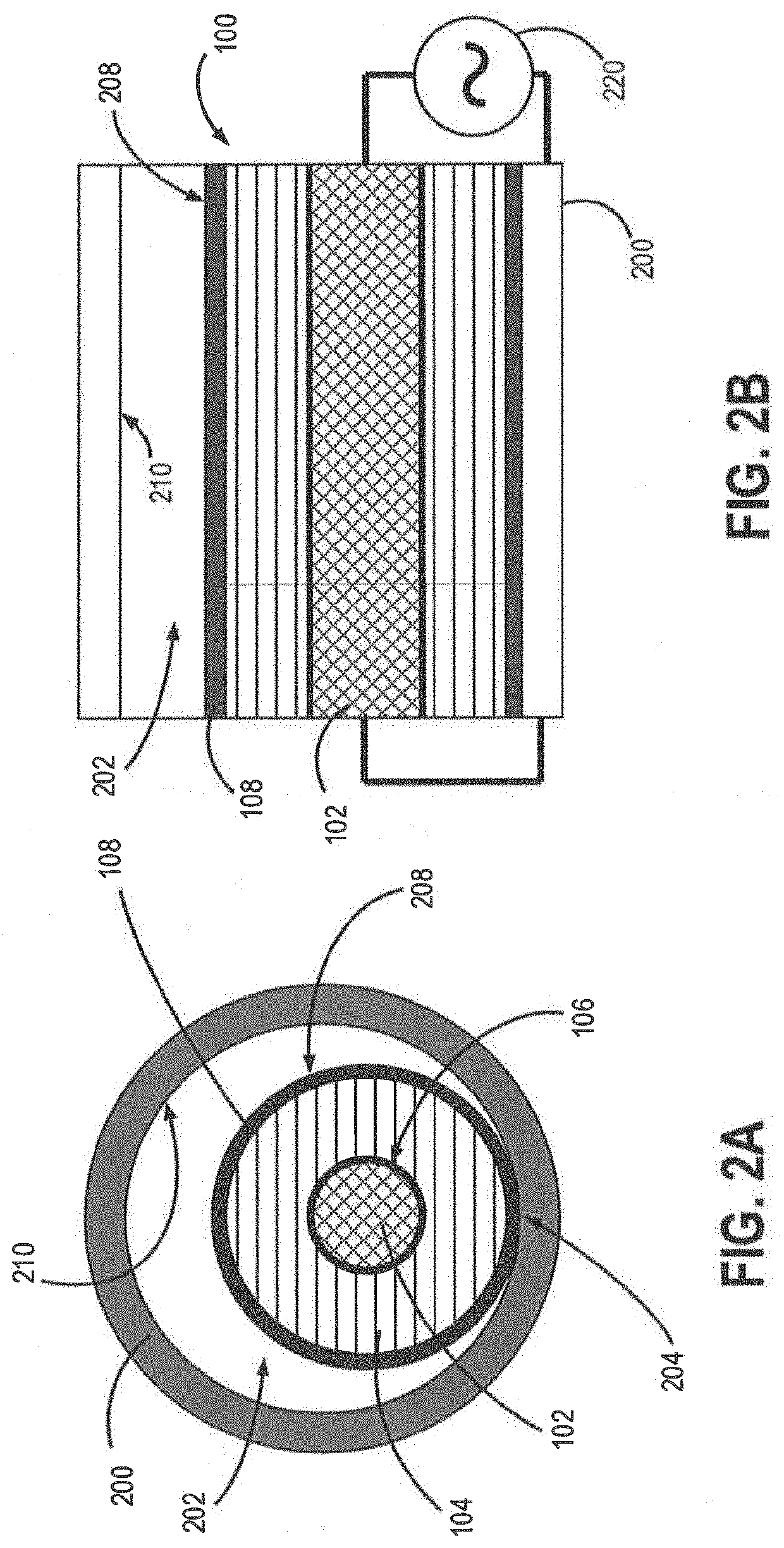Shielded fluoropolymer wire for high temperature skin effect trace heating
a fluoropolymer wire and trace heating technology, which is applied in the direction of heating element materials, heating element shapes, conductors, etc., can solve the problems of increased charge buildup between the two surfaces, protracted partial discharge, and breakage of insulation at the point of contact, so as to minimize the number of discreet circuits needed, the effect of increasing the voltag
- Summary
- Abstract
- Description
- Claims
- Application Information
AI Technical Summary
Benefits of technology
Problems solved by technology
Method used
Image
Examples
Embodiment Construction
[0020]FIG. 1 illustrates a heater cable 100 with each layer subsequently stripped to clearly illustrate its construction in accordance with at least one embodiment of the invention. The heater cable 100 includes a conductor 102 at its core. The conductor 102 can be of any suitable conductive material including tinned copper, nickel plated copper, aluminum, steel, gold, platinum, silver, and others. The conductor 102 may be a solid conductor wire or may be stranded wire. The conductor 102 is encapsulated within a non-conducting electrical insulation layer 104. The electrical insulation layer 104 may be of any suitable material including silicone, perfluoroalkoxy (PFA) polymer, ethylene propylene diene monomer (EPDM) rubber, ethylene propylene rubber (EPR), cross-linked polyethylene (XPLE), and others. In some embodiments, the circumference of the conductor 102 is entirely in physical contact with the electrical insulation layer 104—that is, there are no layers or other components dis...
PUM
| Property | Measurement | Unit |
|---|---|---|
| voltage | aaaaa | aaaaa |
| voltage | aaaaa | aaaaa |
| voltage | aaaaa | aaaaa |
Abstract
Description
Claims
Application Information
 Login to View More
Login to View More - R&D
- Intellectual Property
- Life Sciences
- Materials
- Tech Scout
- Unparalleled Data Quality
- Higher Quality Content
- 60% Fewer Hallucinations
Browse by: Latest US Patents, China's latest patents, Technical Efficacy Thesaurus, Application Domain, Technology Topic, Popular Technical Reports.
© 2025 PatSnap. All rights reserved.Legal|Privacy policy|Modern Slavery Act Transparency Statement|Sitemap|About US| Contact US: help@patsnap.com



